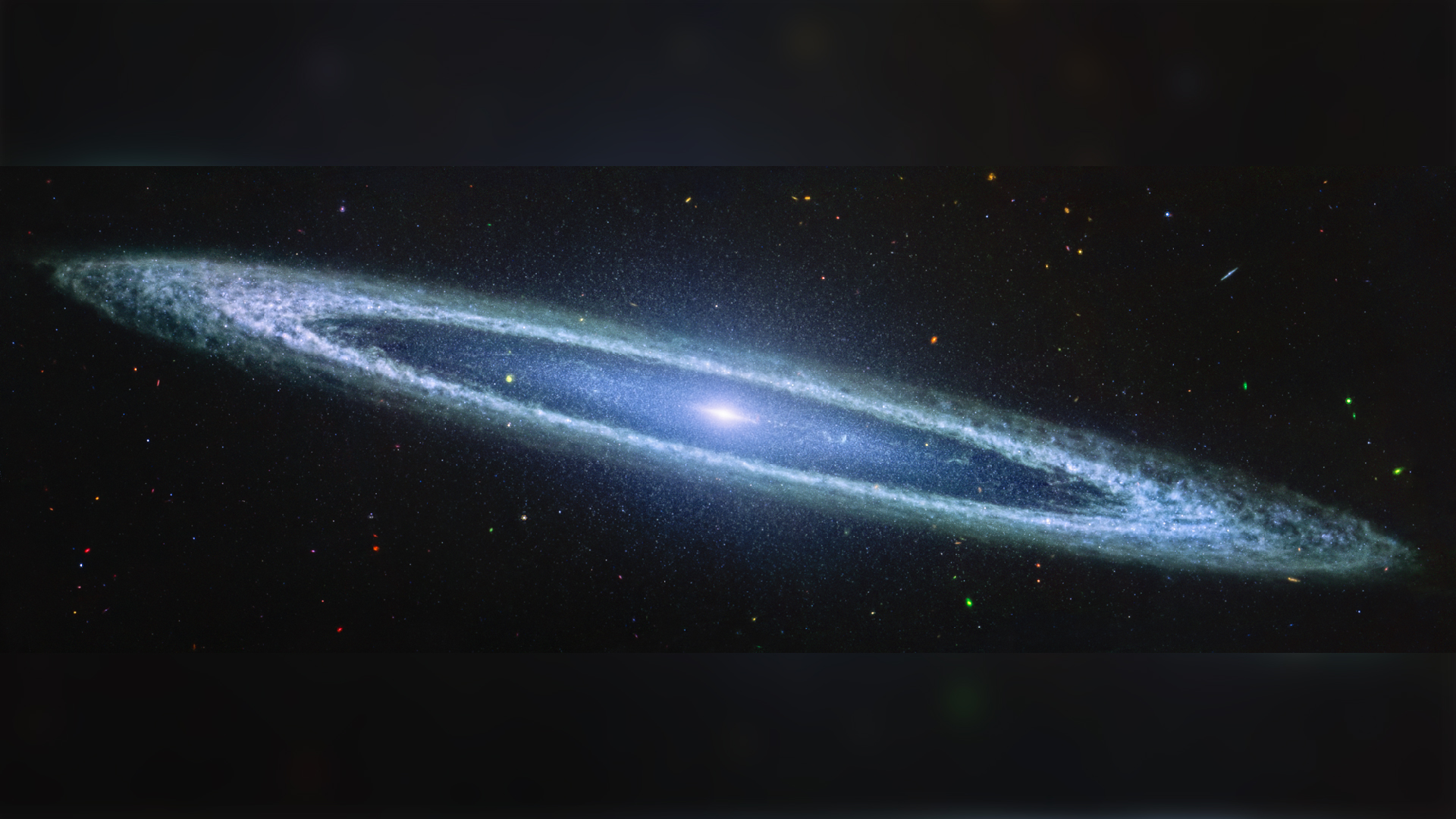
What it is: Sombrero Galaxy (M104), a spiral galaxy.
Where it is: 30 million light-years distant in the Virgo constellation.
When it was shared: Nov. 25, 2024.
Why it's so special: It may have been first discovered in 1781, but the aptly named Sombrero Galaxy has never looked like this. This striking new perspective on an icon of the deep sky comes from NASA's James Webb Space Telescope, which has rendered the spiral galaxy that looks like a broad-brimmed Mexican hat both in high resolution and at mid-infrared wavelengths for the first time.
In visible light the Sombrero Galaxy — which we see edge-on from the solar system — has a brilliantly bright white core encircled by thick dust lanes. But in the mid-infrared it takes on an entirely different look. Now looking more like a bullseye than a hat, it's a more elegant, subtle structure with a smooth inner disk and clumps in its outer ring.
Related: James Webb Space Telescope discovers mysterious 'red monster' galaxies so large they shouldn't exist
This all-new view from JWST's Mid-Infrared Instrument (MIRI) reveals secrets about the Sombrero Galaxy's composition and its role in galactic processes. Scientists say the clumps in the outer dust rings are likely young star-forming regions, which is critical because the Sombrero Galaxy is by no means a prolific star factory. Another edge-on galaxy long studied by astronomers, the Cigar Galaxy or M82, in the constellation Ursa Major, produces 10 times as many stars as are born in the Milky Way galaxy. That's not the case for the Sombrero Galaxy, whose dust rings produce less than one solar mass of stars per year. That's about half as prolific as the Milky Way.


Cyber Monday camera deals live: Plus, savings on telescopes, binoculars and stargazing accessories
You can also grab the latest discounts on science kits, air purifiers and more, as recommended by our expert testers and editors.
Beyond the Sombrero Galaxy itself, JWST's image captures a backdrop of galaxies scattered across space, each glowing in different colors that hint at their distance and properties.
This Sombrero Galaxy image is just the latest of hundreds of groundbreaking images produced by the JWST since its launch on Christmas Day, 2021. As this indispensable tool for modern astronomy approaches its fourth year of science operations in 2025, demand for observation time has reached record highs.
A staggering 2,377 proposals were submitted for the upcoming cycle, requesting nearly 78,000 hours of telescope time. That's an oversubscription rate of nine to one, which reflects the telescope's growing importance in tackling the biggest questions in astronomy.







